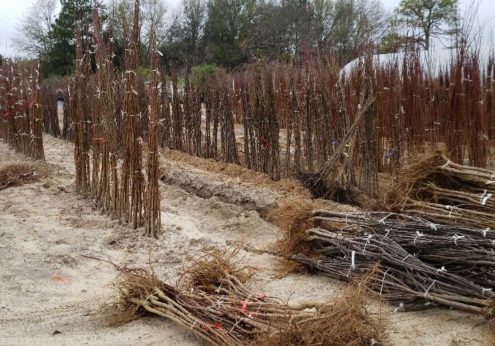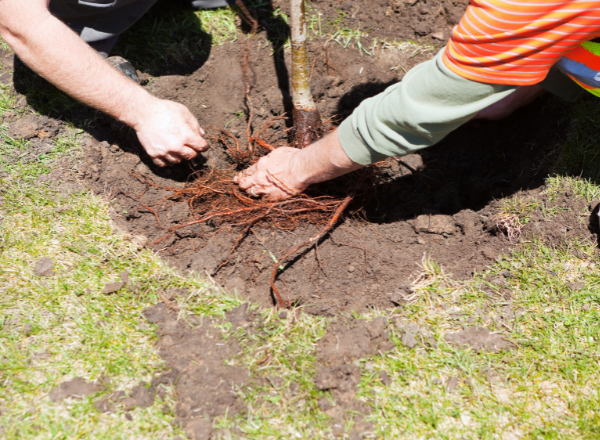Caring For Your Bare Root Trees
FAQs
During the winter months, many of our trees become available as bare root. Bare-root trees come without foliage or soil. Rest assured, they are alive and well, just dormant. Here are some answers to frequently asked questions.
When is it a good time to plant my bare-root tree?
Winter is a good time to plant your tree – as long as the ground is not frozen. Plants should be transplanted within 48 hours of receiving them. Keep trees in a cool, dark location (like a basement or garage) and out of direct sunlight until they are planted. Make sure the root system stays damp, not dripping wet. If the ground is frozen, you can plant the tree in a 5-gallon pot until you can transfer to the ground. Before planting, soak the roots in water or a root stimulator solution like Microlife Super Seaweed for at least 30 minutes, but no more than 24 hours.
How do I plant a bare-root tree?
Dig a hole twice as wide and deep as needed. Create a soil mixture that is 75% made up of the soil you dug out for your tree and 25% compost or planting mix. Now take the mixture of the two soils and fill your hole up halfway. Add water until it is three-quarters full. Place the tree in the hole and fill it with the soil/compost mixture. Then add more water to prevent air pockets. The graft, which is located between the root and stem, should be at least one inch above the soil line. Mulch can be laid around the tree in a 3-foot diameter circle to suppress weeds and to hold in moisture. To help avoid disease and pests, make sure mulch is not touching the tree trunk.
When should I fertilize?
Fertilize with a granular fertilizer before bud break once a year. Alternatively, you can top dress with compost in October and March.
How far apart should I space my plants?
As a general rule, fruit trees should be planted 15-20 feet apart, blackberries should be 4-6 feet apart, and raspberry plants 2-3 feet apart.
How often should I water?
The first two weeks after planting will be the most crucial to survival, so keep your trees properly irrigated. Test the soil with your finger 4 to 5 inches beneath the surface to see if it is dry. Too much water can prevent root growth and drown the tree. Not enough water will cause dehydration. We recommend that you water your trees weekly, slowly and deeply rather than using a daily drip system. Deep watering nourishes the tree’s deepest roots and promotes healthy, strong growth. Frequent, light watering will only moisten the top roots of the tree.
Should I prune my tree?
Before shipping your bare-root tree to you, it was initially dug up from the ground and part of the root system was trimmed back to ensure the tree’s survival. So pruning back your bare-root fruit tree at planting time to better match the size of its root system will help lessen transplant shock. Heading back limbs or shortening them will force new shoots to grow below the cut. If your tree produces stone fruits, you can trim the central leader down to an open vase shape.

